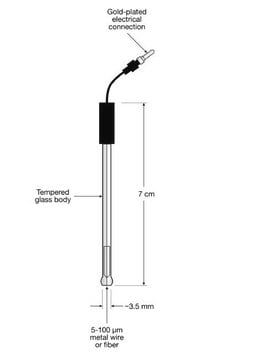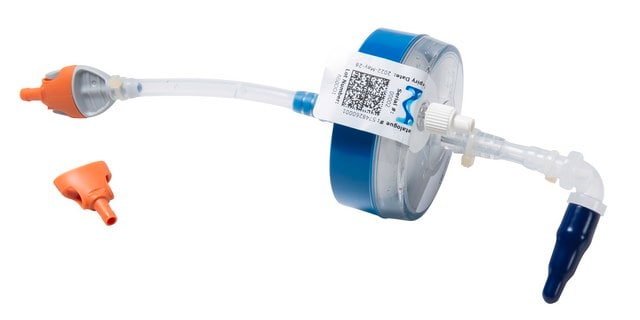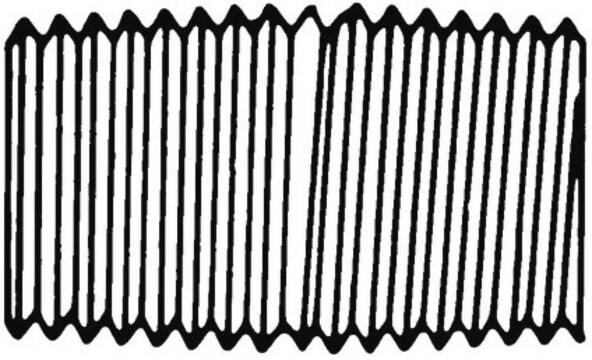HTS129M
ChemiScreen D5 Dopamine Receptor Membrane Preparation
Human D5 GPCR membrane preparation for Radioligand binding Assays & GTPγS binding.
Sign Into View Organizational & Contract Pricing
All Photos(2)
About This Item
UNSPSC Code:
41106514
eCl@ss:
32161000
NACRES:
NA.41
Recommended Products
biological source
human
Quality Level
recombinant
expressed in Chem-1 cells
manufacturer/tradename
ChemiScreen
Chemicon®
technique(s)
ligand binding assay: suitable (GTPγS)
radioligand binding assay (RLBA): suitable
NCBI accession no.
UniProt accession no.
shipped in
dry ice
General description
Dopamine is a catecholamine neurotransmitter that functions in the CNS to control locomotor, cognitive, emotional and neurendocrine processes, and in the periphery to modulate cardiovascular, renal and gastrointestinal processes. The biological activities of dopamine are mediated by a family of five GPCRs. The D1 and D5 subtypes couple to Gs to increase intracellular cAMP, whereas the D2, D3 and D4 subtypes couple to Gi to reduce cAMP (Missale et al., 1998). The hypertensive phenotype of mice with a targeted deletion of D5 indicates that D5 regulates central control of sympathetic vascular tone (Hollon et al., 2002). In addition, D5 modulates locomotion and corticostriatal long-term depression (Centonze et al., 2003). Chemicon′s cloned human D5-expressing cell line is made in the Chem-1 host, which supports high levels of recombinant D5 expression on the cell surface and contains high levels of the promiscuous G protein Gα15 to couple the receptor to the calcium signaling pathway. Thus, the cell line is an ideal tool for screening for antagonists of interactions between D5 and its ligands. The membrane preparations exhibit a Kd of 2.25 nM for [3H]-SCH 23390. With 0.5 nM [3H]-SCH 23390, 10 µg/well D5 Membrane Prep yields greater than 3-fold signal-to-background ratio.
Full-length human DRD5 cDNA encoding D5
Biochem/physiol Actions
Protein Target: D5
Quality
Signal:background and specific binding values obtained in a competition binding assay with varying amounts of D5 membrane prep:
SPECIFICATIONS: 1 unit = 10 µg
Bmax for [3H] SCH 23390 binding: 11.42 pmol/mg protein;
Kd for [3H] SCH 23390 binding: ~ 2.25 nM
| 10 µg/well | |
|---|---|
| Signal:Background | 4.06 |
| Specific Binding (cpm) | 1952 |
SPECIFICATIONS: 1 unit = 10 µg
Bmax for [3H] SCH 23390 binding: 11.42 pmol/mg protein;
Kd for [3H] SCH 23390 binding: ~ 2.25 nM
Specifications
Inucbation Conditions
Membranes are mixed with radioactive ligand and unlabeled competitor (see Figures 1 and 2 for concentrations tested) in binding buffer in a nonbinding 96-well plate, and incubated for 1-2 h. Prior to filtration, a GF/C 96-well filter plate is coated with 0.33% polyethyleneimine for 30 min, then washed with 50mM HEPES, pH 7.4, 0.5% BSA. Binding reaction is transferred to the filter plate, and washed 3 times (1 mL per well per wash) with Wash Buffer. The plate is dried and counted.
Binding buffer: 50 mM Hepes, pH 7.4, 5 mM MgCl2, 1 mM CaCl2, 0.2% BSA, filtered and stored at 4°C
Radioligand: [3H]-SCH 23390. (Perkin Elmer#:NET-930 )
Wash Buffer: 50 mM Hepes, pH 7.4, 500mM NaCl , 0.1% BSA, filtered and stored at 4°C.
One package contains enough membranes for at least 200 assays (units), where a unit is the amount of membrane that will yield greater than 3-fold signal:background with 3H labeled SCH 23390 at 0.5 nM
Membranes are mixed with radioactive ligand and unlabeled competitor (see Figures 1 and 2 for concentrations tested) in binding buffer in a nonbinding 96-well plate, and incubated for 1-2 h. Prior to filtration, a GF/C 96-well filter plate is coated with 0.33% polyethyleneimine for 30 min, then washed with 50mM HEPES, pH 7.4, 0.5% BSA. Binding reaction is transferred to the filter plate, and washed 3 times (1 mL per well per wash) with Wash Buffer. The plate is dried and counted.
Binding buffer: 50 mM Hepes, pH 7.4, 5 mM MgCl2, 1 mM CaCl2, 0.2% BSA, filtered and stored at 4°C
Radioligand: [3H]-SCH 23390. (Perkin Elmer#:NET-930 )
Wash Buffer: 50 mM Hepes, pH 7.4, 500mM NaCl , 0.1% BSA, filtered and stored at 4°C.
One package contains enough membranes for at least 200 assays (units), where a unit is the amount of membrane that will yield greater than 3-fold signal:background with 3H labeled SCH 23390 at 0.5 nM
Physical form
Liquid in packaging buffer: 50 mM Tris pH 7.4, 10% glycerol and 1% BSA no preservatives. Packaging method: Membranes protein were adjusted to 1 mg/mL in 1 mL packaging buffer, rapidly frozen, and stored at -80%deg;C.
Legal Information
CHEMICON is a registered trademark of Merck KGaA, Darmstadt, Germany
Storage Class
12 - Non Combustible Liquids
wgk_germany
WGK 2
flash_point_f
Not applicable
flash_point_c
Not applicable
Certificates of Analysis (COA)
Search for Certificates of Analysis (COA) by entering the products Lot/Batch Number. Lot and Batch Numbers can be found on a product’s label following the words ‘Lot’ or ‘Batch’.
Already Own This Product?
Find documentation for the products that you have recently purchased in the Document Library.
Diego Centonze et al.
The Journal of neuroscience : the official journal of the Society for Neuroscience, 23(24), 8506-8512 (2003-09-19)
Stimulation of dopamine (DA) receptors in the striatum is essential for voluntary motor activity and for the generation of plasticity at corticostriatal synapses. In the present study, mice lacking DA D1 receptors have been used to investigate the involvement of
Tom R Hollon et al.
The Journal of neuroscience : the official journal of the Society for Neuroscience, 22(24), 10801-10810 (2002-12-18)
Dopamine is an important transmitter in the CNS and PNS, critically regulating numerous neuropsychiatric and physiological functions. These actions of dopamine are mediated by five distinct receptor subtypes. Of these receptors, probably the least understood in terms of physiological functions
C Missale et al.
Physiological reviews, 78(1), 189-225 (1998-02-11)
The diverse physiological actions of dopamine are mediated by at least five distinct G protein-coupled receptor subtypes. Two D1-like receptor subtypes (D1 and D5) couple to the G protein Gs and activate adenylyl cyclase. The other receptor subtypes belong to
Our team of scientists has experience in all areas of research including Life Science, Material Science, Chemical Synthesis, Chromatography, Analytical and many others.
Contact Technical Service








